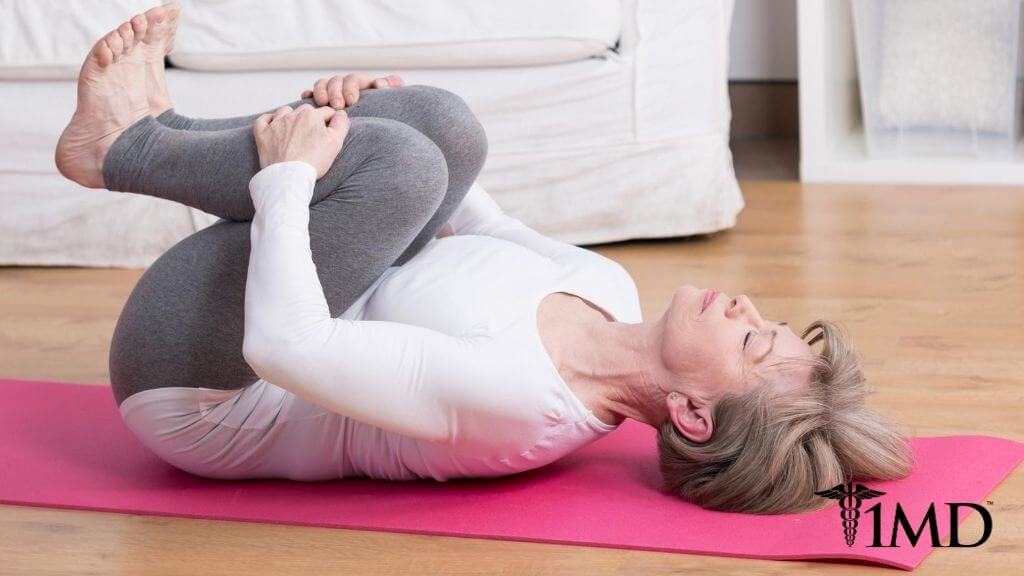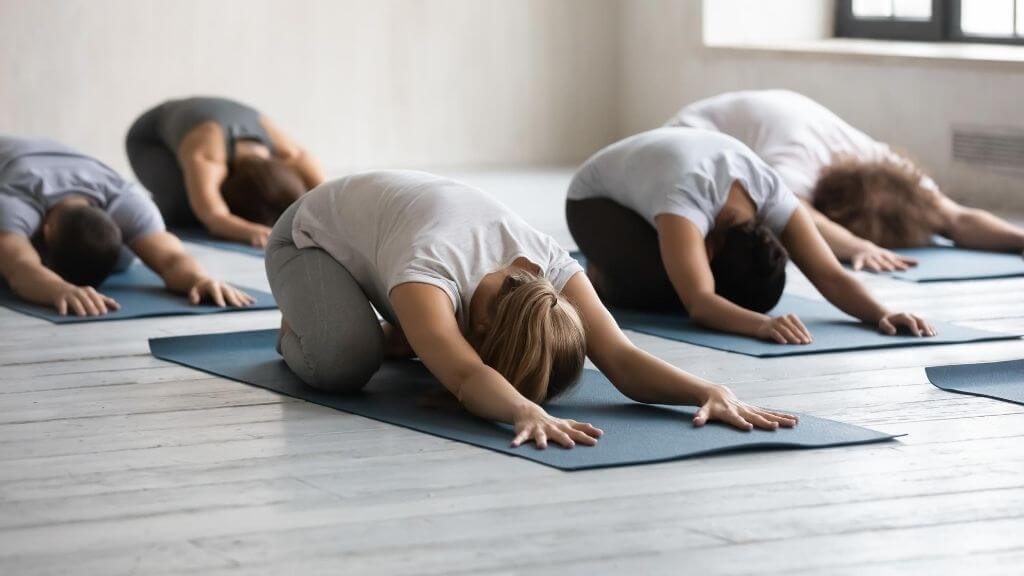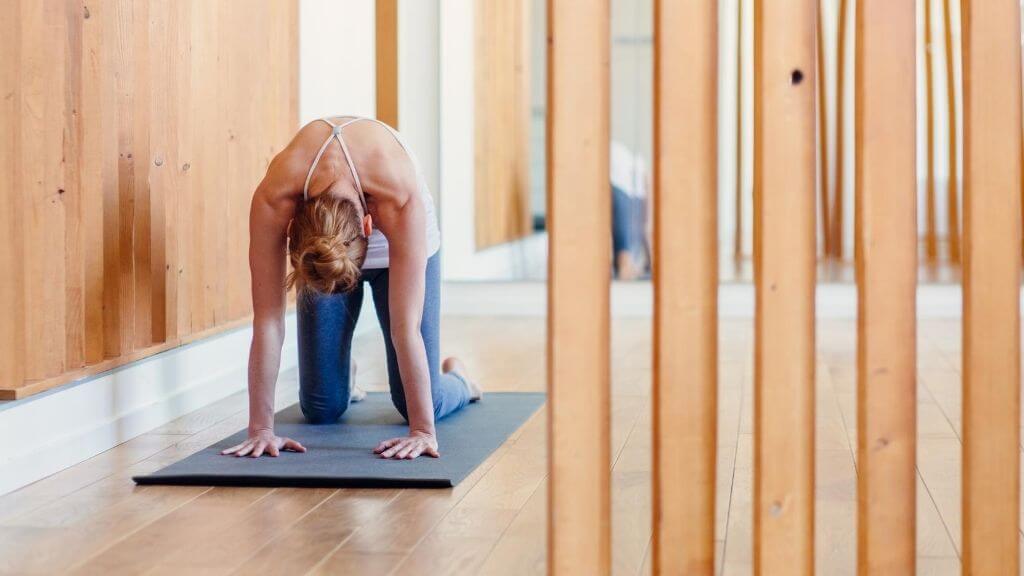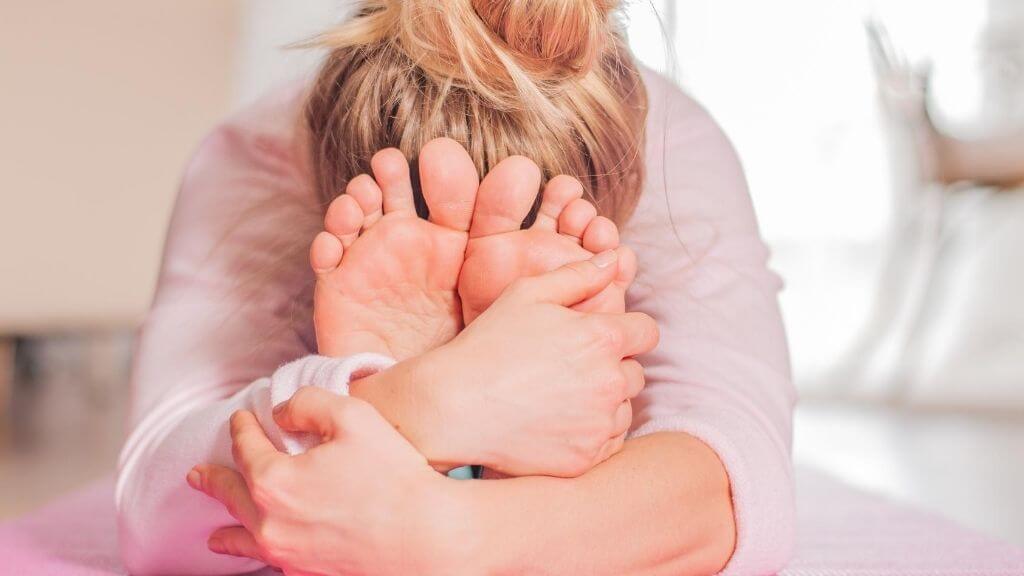3 Yoga Stretches for Back Pain Relief You Can Start for Free Today
8 minute read
Do you suffer from back pain? If so, you’re certainly not alone. In the United States nearly 65 million people report a recent episode of back pain.
If you have back pain, we have some essential yoga stretches that are designed to help your lower back both fight pain and gently stretch to relieve your pain. Making these a part of your daily regimen can help you stay healthy and feel fantastic.
Back Pain Around the Globe
Back issues are not exclusive to the USA—worldwide back pain is the single leading cause of disability. It prevents people from engaging in work as well as other normal activities in everyday life.
Back pain can affect people of all ages, genders, professions, and more. It is an equal-opportunity affliction that is estimated to effect 80% of the population at some point in time.
It’s so prevalent that it’s listed as the third most common reason for visits to the doctor’s office. While most people who suffer from back pain typically recover from it, it’s not uncommon for them to have it return.
The causes of back pain are varied and can come from something like a trauma or serious injury to just reaching too far. It can also be a symptom of something more serious, such as a disease of the internal organs, kidney infection, blood clots, or bone loss.
Yoga for Back Health
As always with pain and new exercises, it’s a great idea to check with your primary healthcare provider to see if your back pain has underlying causes that need attention. You should also make sure you’re cleared to do these exercises before starting, just to ensure that you cannot hurt yourself further.

One great reason to try yoga as a way to relieve your back pain is that it’s a natural and healthy approach; plus, it’s free. There are a lot of remedies on the market to help with back pain, from expensive beds to potentially addictive pain medications.
Not only that, but yoga has been around a long time and is a known way to effectively stretch the body, strengthen the muscles and encourage healthy circulation.
The three stretches we suggest to alleviate your back pain and to strengthen your back are gentle and can be modified to accommodate people who cannot get to the ground and have to try them in a chair. Remember, never do an exercise or stretch that causes you pain, a comfortable stretching feeling is natural, but you should not feel pain.
When doing your stretches, try to relax into the pose so that it feels comfortable and you can hold it without difficulty. Take deep, lung-filling breaths and then exhale slowly. Enjoy the stretch and the feeling of your body stretching and relaxing.
Stretch One: Seated Half Twist
This is a very gentle stretch that can provide great benefit. Start on a chair or seated on the floor.
Chair: If you’re in a chair, place your feet flat on the ground, avoid crossing your legs. Your spine should be neutral, not slouched nor arched.
Take a deep breath and then exhale as you twist to the side. The movement should come from your low back up to your neck and shoulders so that you’re looking to the side or back over your shoulder if you can twist that far.

Take several deep breaths and try to relax into an even deeper stretch. When you’re done, slowly untwist. Take a little break and then twist in the other direction.
Floor: If you’re sitting on the floor, you can place your legs straight out in front of you. Then bend one leg at the knee. If you’re able to cross it over the leg that’s still straight, do that and place your foot next to the outside of the knee of the extended leg.
You will twist toward the bent leg. If the right leg is bent, then move the left side: waist, ribs, chest, shoulder, neck, and chest toward the front, and the right shoulder will be angled toward the back.
Be sure to keep your spine neutral without hunching or arching. You may want to use your hand as support. Like the seated stretch, take deep breaths in and out and relax into the stretch. Then unwind slowly and switch to the other side.
Stretch Two: Cat/Cow
The goal of this stretch is to increase spine flexibility in another direction. If you are able to do it on the ground, make sure you have protection for your hands and knees and that your knees can handle the stretch.
Chair: The chair modification requires you sit upright in a chair with a neutral spine and your feel flat on the floor. Rest your hands on top of your thighs and gently bow or arch your back.

If it’s comfortable, tip your head back and look upward. Breath deeply and relax. Then reverse the movement and push your spine backward, letting your head fall toward your chest.
Floor: Once in the “all-fours position,” comfortably on your hands and knees with your hands directly under your shoulders and your knees immediately below your hips, place your spine in a neutral position, which means as straight as possible.
Now slowly bow your back down into the cow pose, lifting your head and tailbone upward while spine dips down. Then reverse the position into the cat pose and arch your back upward, letting your head drop and tuck slightly.
Stretch Three: Seated Forward Bend
This stretch takes more effort, but works on your back muscles as well as your glutes and hamstrings.
Chair: Assume the chair position, sitting with your spine neutral and your feet flat on the floor. Take a deep breath and lift your rib cage, raise your arms up over your head, and stretch your neck upward.
Then exhale and bend at the waist as far as you comfortably can. Round your back as your torso approaches your thighs and try to get your hands down on the floor, next to your feet. If you can’t reach all the way down, that’s fine.
| Related: The Benefits of Meditation on Brain Structure |
Do what you can, always being careful to keep your balance so you do not fall out of the chair. Enjoy the stretch for several breaths and then return to an upright position by reversing the stretch.
Floor: Sit on the floor with your legs straight in front of you with your spine in a neutral position. Inhale and raise your arms over your head. Exhale and bend forward as far as you comfortably can.

Let your arms drop so your palms are on the floor. Breathe deeply to enjoy the stretch and relax into it. When you’re ready to come out of the pose, inhale and lift arms, neck, and shoulders, and rise upward with a straight spine.
The Bottom Line
With regular practice these stretches will become easier and your back will strengthen, regain flexibility and be more resilient against future pain and injury. Start small and slow so you don’t cause injury or exacerbate your current condition.
Over time and with diligence, you’ll begin to see results in both strength and flexibility. The best way to protect your back is to be proactive in strengthening it—yoga is a great way to start.












